
Can The Honda Scrambler Stir The Hornet’s Nest?
- Feb 5, 2021
- Views : 56740


The Honda Hornet 2.0 is the brand’s first motorcycle in the 180-200cc segment in India. It goes up against the TVS Apache RTR 200 4V and the Bajaj Pulsar NS200. So where exactly does it stand amongst its competition? This specification comparison should help clear things out.
Engine
|
Specifications |
Honda Hornet 2.0 |
TVS Apache RTR 200 4V |
Bajaj Pulsar NS200 |
|
Engine |
184.4cc, single-cylinder, air-cooled, fuel-injected engine |
197.5cc, single-cylinder, air-cooled, engine with oil cooler & fuel injection |
199.5cc, single-cylinder, 4-valve SOHC, liquid-cooled, fuel-injected engine |
|
Power |
17.2PS at 8500rpm |
20.5PS at 8500rpm |
24.5PS at 9750rpm |
|
Torque |
16.1Nm at 6000rpm |
16.8Nm at 7500rpm |
18.5Nm at 8000rpm |
|
Gearbox |
5-speed |
5-speed with slipper clutch |
6-speed |
The Honda Hornet 2.0 has the smallest engine among the three and its power and torque figures are quite anemic. Instead of developing a 200-odd cc engine from ground up, Honda seems to have based the motor on the CBF190R that’s sold in the international market.
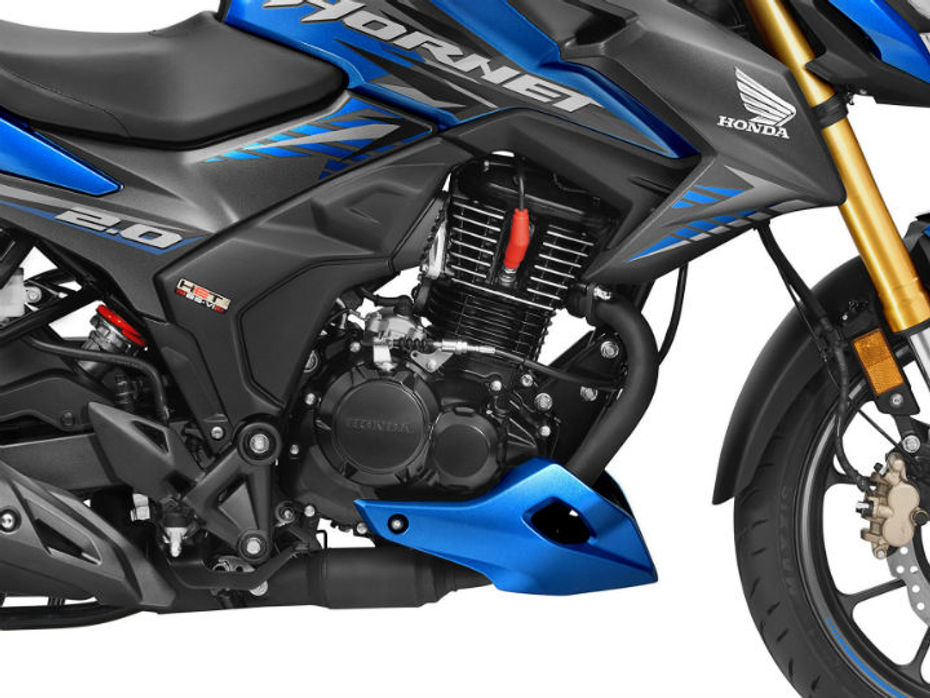
While the Hornet 2.0’s engine gets a roller rocker arm and piston cooling jet for friction reduction and thermal efficiency, the TVS Apache RTR 200 4V’s motor features a proper oil cooler for better performance. It also gets Glide Through Technology (GTT), which is essentially a low-rpm assist that ensures the bike crawl in traffic with just clutch modulation. TVS claims its ram-air assist reduces the engine’s heat signature by 10 degree celsius for enhanced efficiency. The Bajaj Pulsar NS200 gets a more advanced liquid-cooled engine linked to a 6-speed transmission, which should ensure better highway cruising capability compared to the other two motorcycles.
Underpinnings
|
Specifications |
Honda Hornet 2.0 |
TVS Apache RTR 200 4V |
Bajaj Pulsar NS200 |
|
Frame |
Diamond type |
Double cradle split Synchro Stiff frame |
High-stiffness low flex perimeter frame |
|
Front suspension |
Inverted fork with gold finish |
Telescopic fork |
Telescopic fork |
|
Rear suspension |
Monoshock with preload adjustability |
Monoshock tuned by KYB |
Nitrox monoshock |
|
Front brake |
276mm petal disc with single-channel ABS |
270mm petal disc with dual-channel ABS |
300mm disc with single-channel ABS |
|
Rear brake |
220mm petal disc |
240mm petal disc with rear wheel lift-off protection |
230mm disc |
|
Front tyre |
110/70-17 |
90/90-17 |
100/80-17 |
|
Rear tyre |
140/70- 17 |
130/70 R17 |
130/70-17 |
The Honda Hornet 2.0’s inverted front fork is more sophisticated than the conventional telescopic fork on the other two bikes. In fact, this is the first time Honda has equipped a made-in-India bike with an inverted front fork. As far as the braking department is concerned, the TVS Apache RTR 200 4V is the safest of the lot thanks to dual-channel ABS and rear wheel lift off protection.
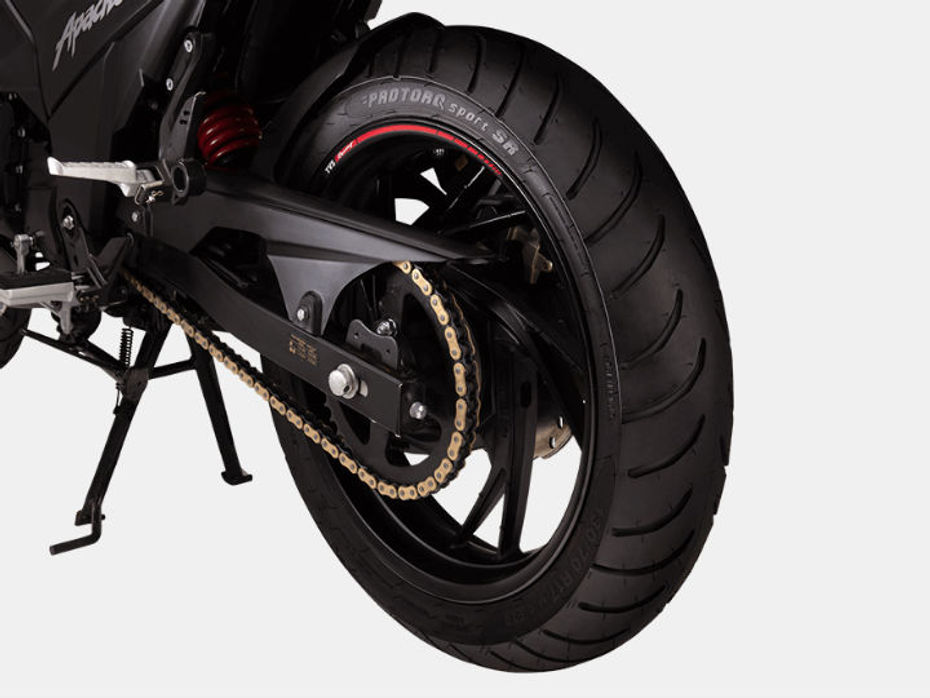
It is also the only bike in this comparison to get a Eurogrip Protorq SR radial tyre for better sidewall stiffness. This translates into better cornering confidence, not to mention improved grip due to the stickier compound. The Hornet 2.0 gets the fattest tyres here, but the Maxxis units are not radial. Being the most powerful bike of the lot, the Bajaj Pulsar gets the biggest front brake but it only gets a single-channel ABS.
Dimensions & Features
|
Specifications |
Honda Hornet 2.0 |
TVS Apache RTR 200 4V |
Bajaj Pulsar NS200 |
|
Wheelbase |
1355mm |
1353 mm |
1363mm |
|
Ground clearance |
167mm |
180mm |
168mm |
|
Fuel tank capacity |
12 litres |
12 litres |
12 litres |
|
Seat height |
NA |
800mm |
NA |
|
Kerb weight |
142kg |
153kg |
156kg |
The slightly longer wheelbase of the Bajaj Pulsar NS200 should give it better stability on the straights. When it comes to taming terrain, the TVS Apache RTR 200 4V’s high ground clearance should ensure going over bad roads will be an easy and worry-free affair. Despite packing a liquid-cooled engine, the Bajaj Pulsar NS200’s kerb weight is just 3kg more than the Apache, which is pretty commendable. Meanwhile, the Hornet 2.0’s light kerb weight should make it easy to manoeuvre in the city.
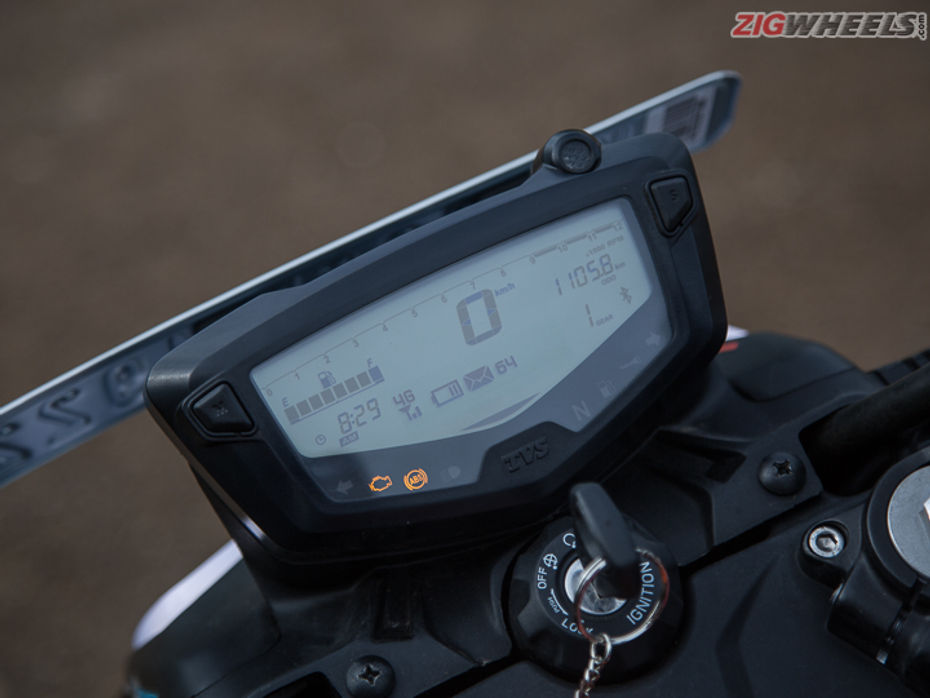
As far as features are concerned, the Hornet 2.0 gets an all-LED lighting system whereas the Apache gets an LED headlamp and tail lamp. The Apache is also the most feature-packed motorcycle in this comparison, equipped with a full-digital instrument cluster with smartphone connectivity and turn-by-turn navigation. Its GTT feature should also make life easier on traffic-riddled roads. Apart from a semi-digital instrument console and an LED tail lamp, the Bajaj Pulsar NS200 has nothing noteworthy in terms of features.
Price & Verdict
|
Honda Hornet 2.0 |
TVS Apache RTR 200 4V |
Bajaj Pulsar NS200 |
|
Rs 1,26,921 |
Rs 1,28,550 |
Rs 1,29,530 |
(all prices, ex-showroom Delhi)
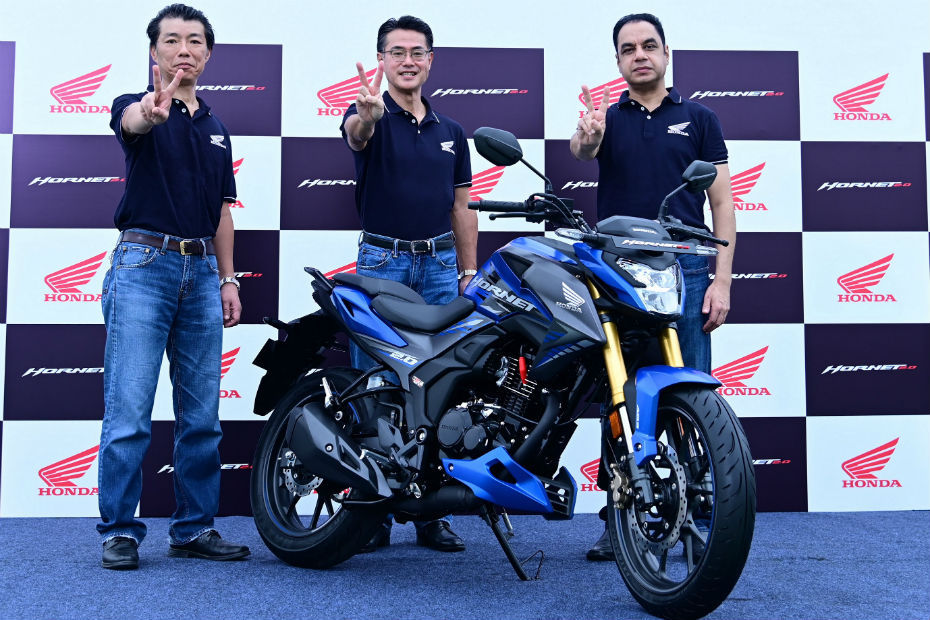
While the Honda Hornet 2.0 is the most affordable of the lot, it isn’t exactly packed with features nor is it rich in performance. That said, it does look striking and will appeal to younger riders who are under a strict budget. If you’re willing to pay a bit more, you could get the TVS Apache RTR 200 4V that offers a great balance of both. The Bajaj Pulsar NS200 is perfect for those who prefer no-nonsense performance.
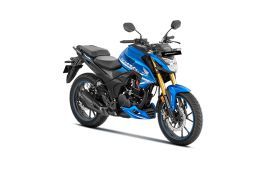

Can The Honda Scrambler Stir The Hornet’s Nest?

Upcoming Honda Cruiser: Our Expectations

Honda Set To Cruise Into Town With The H'ness CB350 Tomorrow

Honda Unveils Chinese Cousin Of Hornet 2.0

Honda Hornet 2.0: Review In Images

Hornet 2.0, Dio Receive The Orange Treatment

Will Honda Now Make The CBF190TR In India?

How Different Is The Honda Hornet 2.0 Compared To The CBF190R?
 TVS Apache RTR 160 4V
TVS Apache RTR 160 4V
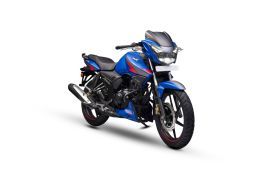 TVS Apache RTR 160
TVS Apache RTR 160
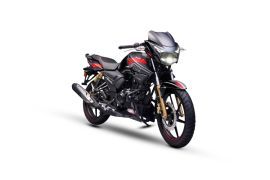 TVS Apache RTR 180
TVS Apache RTR 180
 Bajaj Pulsar NS200
Bajaj Pulsar NS200
 TVS Apache RTR 200 4V
TVS Apache RTR 200 4V
India's largest automotive community